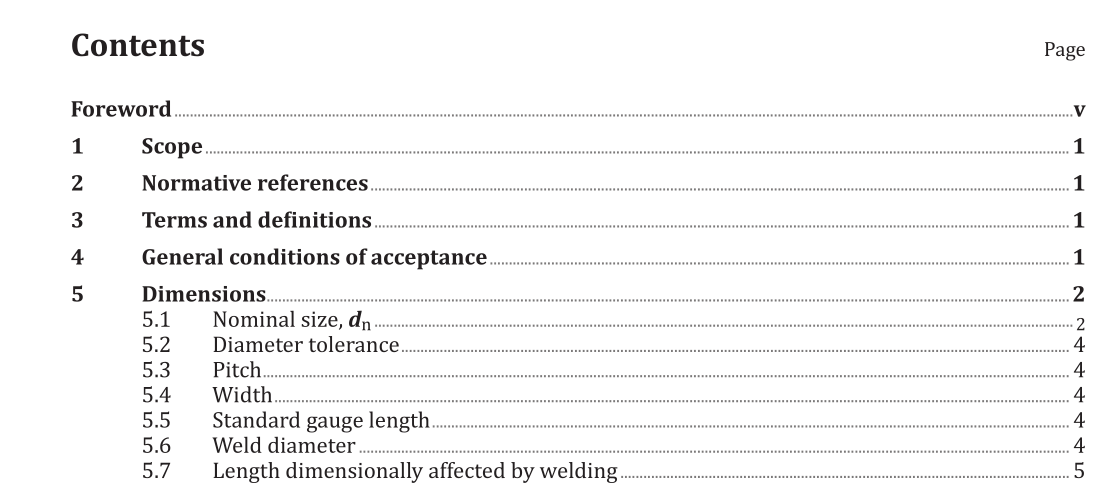ISO 16877:2015 pdf download.Round steel short link chains for lifting purposes — Fine tolerance hoist chains for hand operated chain hoists — Grade TH
1 Scope
This International Standard specifies the requirements for fine-tolerance hoist chains of grade TH for use as load chains in hand operated chain hoists for lifting purposes. They are round steel short link chains, electrically welded, heat treated, and tested; they comply with the general conditions of acceptance of ISO 1834.
NOTE 1 The letter “T” expresses the grade in accordance with ISO 1834.
NOTE 2 The letter “H” expresses that these hoist chains are for hand operated hoists only.
NOTE 3 Resistance butt welding and flash welding are listed in ISO 4063.
The range of nominal sizes covered by this International Standard is from 3 mm to 13 mm. Fine-tolerance hoist chains, according to this International Standard, are for use in the temperature range −10 °C to 200 °C.
2 Normative references
The following documents, in whole or in part, are normatively referenced in this document and are indispensable for its application. For dated references, only the edition cited applies. For undated references, the latest edition of the referenced document (including any amendments) applies.
ISO 148-1, Metallic materials — Charpy pendulum impact test — Part 1: Test method
ISO 497, Guide to the choice of series of preferred numbers and of series containing more rounded values of preferred numbers
ISO 643, Steels — Micrographic determination of the apparent grain size
ISO 1834, Short link chain for lifting purposes — General conditions of acceptance
ISO 6507-1, Metallic materials — Vickers hardness test — Part 1: Test method
ISO 7500-1, Metallic materials — Verification of static uniaxial testing machines — Part 1: Tension/compression testing machines — Verification and calibration of the force-measuring system
ISO 14556, Steel — Charpy V-notch pendulum impact test — Instrumented test method
3 Terms and definitions
For the purposes of this document, the terms and definitions given in ISO 1834 and the following apply.
3.1 standard gauge length
multiple pitch length based on 11 chain links
4 General conditions of acceptance
The hoist chains shall comply with the requirements of ISO 1834, as well as those of this International Standard.
6.4.6 Toughness
The toughness of the finished hoist chain shall be verified by impact test method on full-size, subsize, or super subsize specimens. The lowest service temperature (T ) of the hoist chain shall be T ≥ T NDT −20K, as a result of ISO/TR 23602. Based on a correlation between KV shift and the T NDT shift, a KV-T master curve with the requirement of KV (0 °C) ≥ 30 J results in a value T NDT −20K of ≤−10 °C. Therefore, a lowest temperature during the operation of −10 °C is possible. Full-size specimens shall be tested in accordance with ISO 148-1. On the other hand, subsize specimens shall be tested in accordance with ISO 14556. If the chain leg is too short to extract a full-length subsize specimen, the subsize specimens shall be produced according to Figure 3 by joining additional leg parts using laser welding. Super subsize specimens shall then be tested in accordance with ISO 14556, except that the specimen dimensions shall be in accordance with Figure 4. Super subsize specimens shall be produced by joining additional leg parts using pulsed micro-laser welding. The settings for laser welding and pulsed micro-laser welding shall be such that the hardness and micro-structure of the specimen are not affected in the area of the notch. After welding, the specimens shall be machined to the specified dimensions. Either pendulum impact type or drop weight type test equipment may be used, taking account of the accuracy of measurement of the toughness value. If the chain link is large enough to extract a full-size specimen, the tests shall be carried out on full-size specimens. Three specimens shall be tested, each of which shall achieve a KV toughness of at least 30 J at a test temperature of 0 °C.
ISO 16877:2015 pdf download
